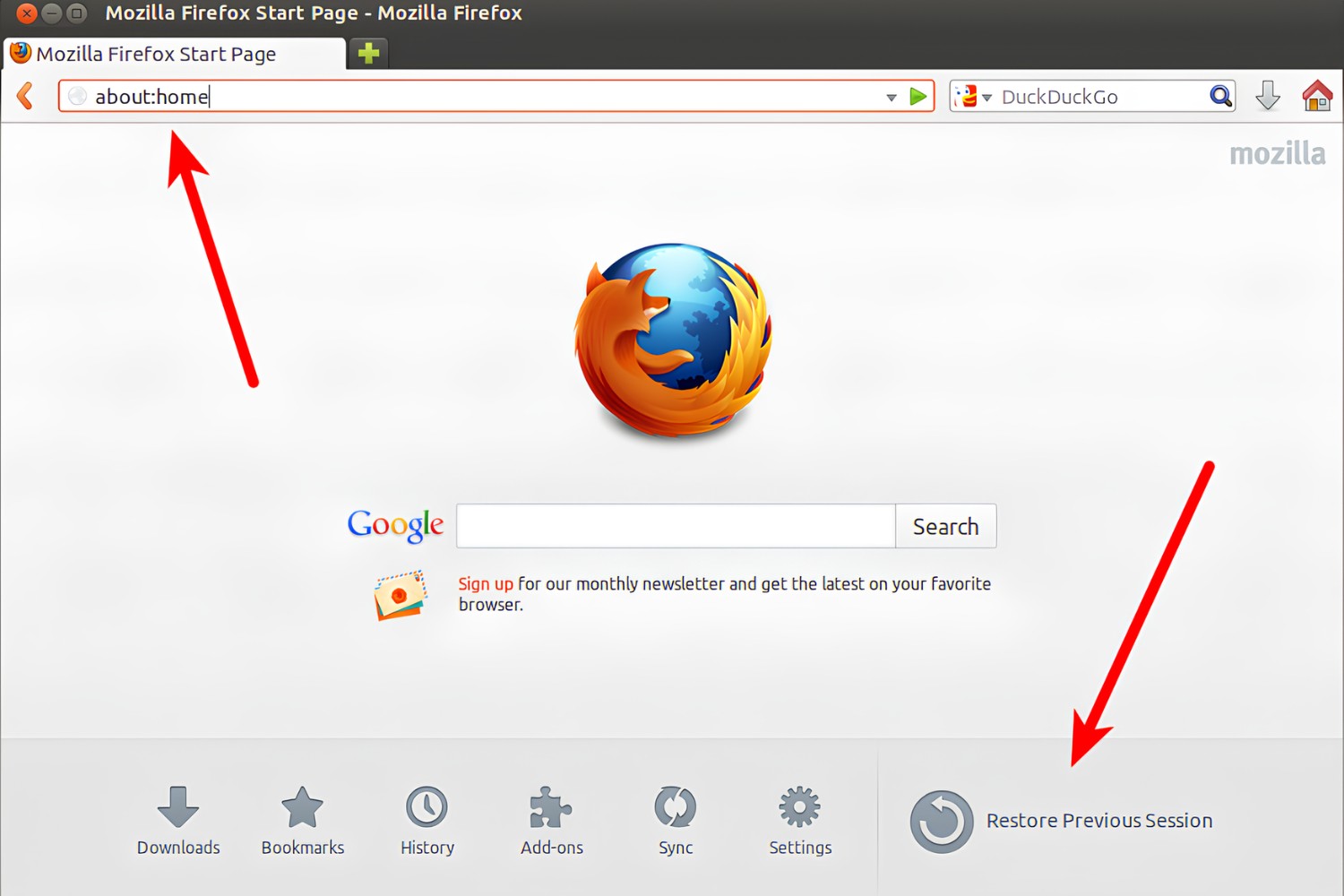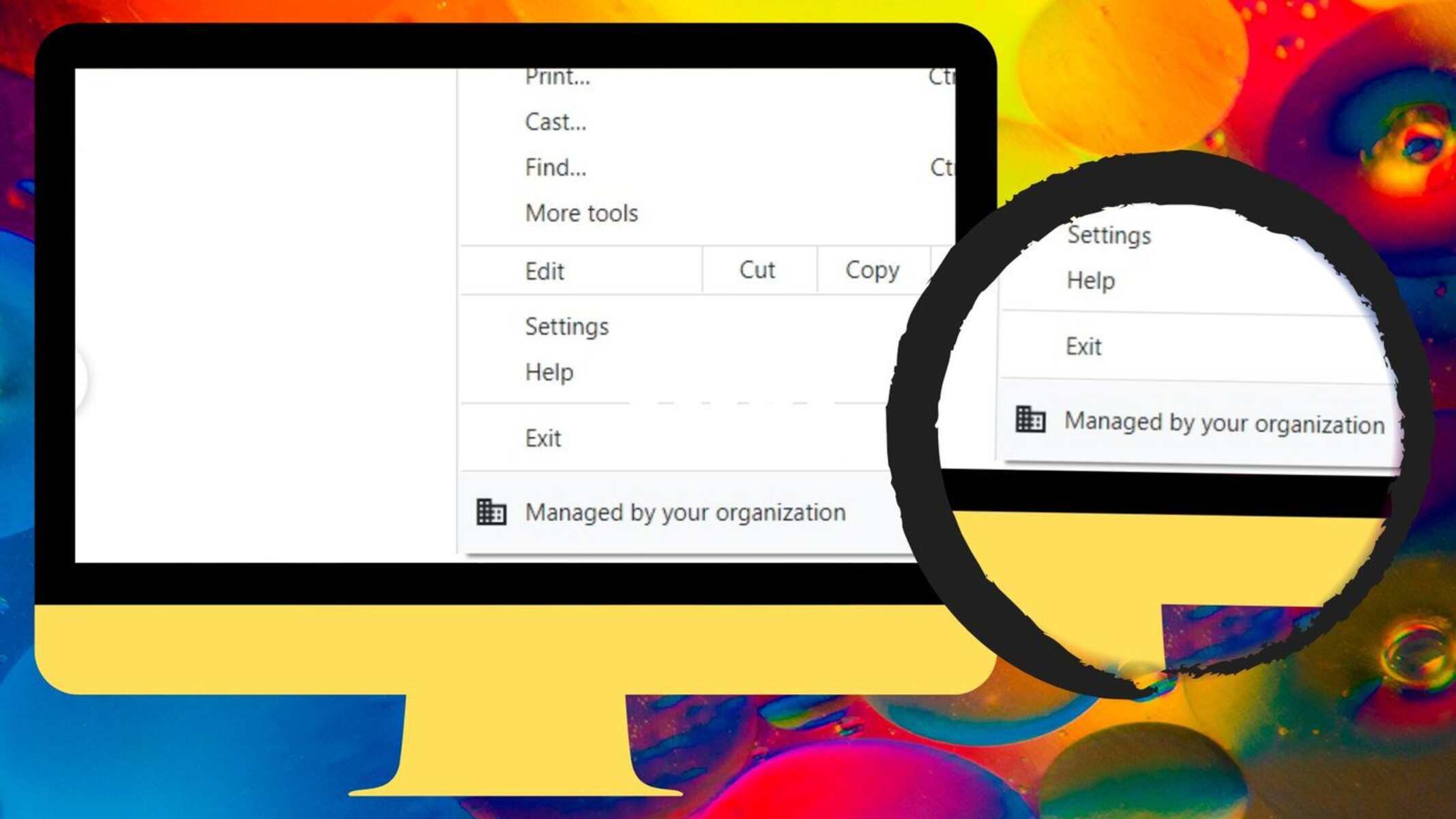Introduction
Mozilla Firefox is a popular web browser known for its speed, security, and customization options. However, like any software, it may encounter issues that require restoration to its default settings. Whether you're experiencing frequent crashes, sluggish performance, or unexpected errors, restoring Mozilla Firefox can often resolve these issues and provide a fresh start for your browsing experience.
In this comprehensive guide, we will walk you through the step-by-step process of restoring Mozilla Firefox to its default state. By following these instructions, you can effectively address various issues and ensure that your browser is running smoothly and efficiently.
Restoring Mozilla Firefox involves uninstalling the current version, downloading and installing the latest release, and restoring your bookmarks and settings. Additionally, we will address common troubleshooting issues that may arise during the restoration process, equipping you with the knowledge to overcome potential obstacles.
Whether you're a seasoned Firefox user or new to the browser, this guide will provide you with the necessary tools to restore Mozilla Firefox and optimize your browsing experience. Let's dive into the process and get your Firefox browser back to its optimal state.
Step 1: Uninstalling Mozilla
Uninstalling Mozilla Firefox is the initial step in the restoration process. Before proceeding, it's essential to ensure that you have alternative browsers installed on your device to maintain uninterrupted access to the internet. Here's a detailed walkthrough of the uninstallation process:
-
Open the Control Panel: Navigate to the Control Panel on your Windows computer. You can access the Control Panel by searching for it in the Windows search bar or by locating it in the Start menu.
-
Select "Uninstall a Program": Within the Control Panel, locate the "Programs" section and click on "Uninstall a Program." This will display a list of installed applications on your computer.
-
Locate Mozilla Firefox: Scroll through the list of installed programs and locate Mozilla Firefox. Once you've found it, click on it to initiate the uninstallation process.
-
Initiate Uninstallation: After selecting Mozilla Firefox, click on the "Uninstall" or "Change/Uninstall" option. This will prompt the uninstaller to begin removing the browser from your system.
-
Follow Uninstallation Prompts: As the uninstallation process progresses, you may encounter prompts asking for confirmation to remove Firefox and its associated data. Follow the on-screen instructions to proceed with the uninstallation.
-
Complete Uninstallation: Once the uninstallation process is complete, you may be prompted to restart your computer to finalize the removal of Mozilla Firefox.
-
Verify Uninstallation: After restarting your computer, verify that Mozilla Firefox has been successfully uninstalled by checking the list of installed programs in the Control Panel.
It's important to note that the uninstallation process may vary slightly based on your operating system. If you're using a different operating system such as macOS or Linux, the steps to uninstall Mozilla Firefox may differ. Be sure to consult the specific uninstallation guidelines for your operating system to ensure a seamless removal of the browser.
By following these steps to uninstall Mozilla Firefox, you'll pave the way for a clean reinstallation of the browser, setting the stage for the subsequent steps in the restoration process.
Step 2: Downloading and Installing the Latest Version
After successfully uninstalling Mozilla Firefox, the next crucial step in the restoration process is to download and install the latest version of the browser. This ensures that you have access to the most up-to-date features, security enhancements, and performance improvements. Here's a detailed guide on how to obtain and install the latest version of Mozilla Firefox:
-
Open Your Preferred Web Browser: Launch an alternative web browser that is still installed on your device, such as Microsoft Edge, Google Chrome, or Safari. This will enable you to access the official Mozilla Firefox website and download the latest version.
-
Navigate to the Mozilla Firefox Website: In the address bar of your alternative web browser, enter the official Mozilla Firefox website URL (https://www.mozilla.org/en-US/firefox/). Once on the website, you'll be presented with the option to download the latest version of Firefox.
-
Download the Latest Version: Look for the prominent download button or link that indicates the availability of the latest version. Click on the download button to initiate the download process. The website may automatically detect your operating system and provide the appropriate download link.
-
Choose Your Operating System: If prompted, select your specific operating system from the available options. Whether you're using Windows, macOS, or Linux, ensure that you select the correct version of Firefox compatible with your operating system.
-
Initiate the Download: After selecting the appropriate operating system, proceed to download the installation file. Depending on your browser settings, you may be prompted to specify the download location on your device.
-
Run the Installation File: Once the download is complete, locate the installation file (typically named "Firefox Installer" or similar) and double-click on it to initiate the installation process.
-
Follow Installation Prompts: As the installation wizard launches, follow the on-screen prompts to install the latest version of Mozilla Firefox. You may be presented with options to customize the installation settings, such as the installation directory and shortcut creation.
-
Complete the Installation: After confirming your preferred installation settings, allow the installation process to complete. Once finished, you'll have successfully installed the latest version of Mozilla Firefox on your device.
By following these steps, you can ensure that you have the most recent iteration of Mozilla Firefox installed, equipped with the latest features and enhancements. With the latest version in place, you're ready to proceed to the next phase of the restoration process.
Step 3: Restoring Bookmarks and Settings
Restoring your bookmarks and settings is a crucial aspect of bringing Mozilla Firefox back to its optimal state. By recovering your bookmarks, browsing history, and custom settings, you can seamlessly resume your personalized browsing experience. Here's a detailed guide on how to restore your bookmarks and settings in Mozilla Firefox:
Restoring Bookmarks:
-
Access the Bookmarks Library: Open Mozilla Firefox and click on the "Bookmarks" option in the top navigation bar. From the dropdown menu, select "Show All Bookmarks" to access the Bookmarks Library.
-
Export Bookmarks (Optional): If you previously exported your bookmarks for backup purposes, you can import them back into Firefox. To do this, click on the "Import and Backup" button within the Bookmarks Library and select "Import Bookmarks from HTML." Locate the backup file on your device and import it into Firefox.
-
Use Sync (If Applicable): If you've enabled Firefox Sync to synchronize your bookmarks across devices, simply sign in to your Firefox account to automatically restore your synced bookmarks.
-
Manually Restore Bookmarks: If you didn't export your bookmarks or use Firefox Sync, you can manually re-add your bookmarks by visiting the websites and saving them to your bookmarks.
Restoring Settings:
-
Access the Options Menu: Click on the three horizontal lines in the top-right corner of the Firefox window to open the main menu. From the menu, select "Options" to access the Firefox settings.
-
Reset Firefox Settings (Optional): If you want to start with a clean slate, you can reset Firefox settings to their default values. In the Options menu, navigate to the "Help" section and select "Troubleshooting Information." Click on the "Refresh Firefox" button to reset the browser settings.
-
Customize Preferences: Within the Options menu, you can customize various preferences such as homepage settings, privacy and security options, and tab behavior to align with your browsing preferences.
-
Add-ons and Extensions: If you had specific add-ons or extensions installed before the restoration, you can re-install them from the official Mozilla Add-ons website to regain the functionality they provided.
By following these steps, you can effectively restore your bookmarks and settings in Mozilla Firefox, ensuring that your browsing experience reflects your personalized preferences and browsing habits. With your bookmarks and settings successfully restored, you're well-equipped to enjoy a seamless and tailored browsing experience on Mozilla Firefox.
Step 4: Troubleshooting Common Issues
Even after restoring Mozilla Firefox to its default state, you may encounter common issues that can impact your browsing experience. Understanding how to troubleshoot these issues is essential for maintaining a smooth and efficient browser performance. Here's a detailed exploration of common problems and their troubleshooting solutions:
Slow Performance or Unresponsiveness
If you notice that Firefox is running sluggishly or becoming unresponsive, several factors could be contributing to this issue. To address slow performance, consider the following troubleshooting steps:
- Clear Cache and Cookies: Over time, accumulated cache and cookies can impact browser performance. Clearing these data can often improve speed and responsiveness.
- Disable Add-ons: Certain add-ons or extensions may be causing performance issues. Temporarily disable add-ons to identify if any specific extension is affecting browser performance.
- Update Graphics Drivers: Outdated graphics drivers can impact browser performance. Ensure that your system's graphics drivers are up to date to support Firefox's rendering capabilities.
Crashes and Error Messages
Frequent crashes or error messages can disrupt your browsing sessions. To troubleshoot crashes and error messages in Firefox, consider the following steps:
- Update Firefox: Ensure that you are using the latest version of Firefox, as updates often include stability improvements and bug fixes.
- Safe Mode: Launch Firefox in Safe Mode to troubleshoot potential issues caused by add-ons or custom settings. Safe Mode disables add-ons and uses default settings to isolate the source of the problem.
- Check for Malware: Run a malware scan on your system to detect and remove any potentially harmful software that may be impacting Firefox's stability.
Compatibility Issues with Websites
Occasionally, you may encounter compatibility issues when accessing certain websites in Firefox. To address compatibility issues, consider the following troubleshooting strategies:
- Clear Browser Data: Clearing browsing history, cookies, and cached data can resolve compatibility issues with specific websites.
- Try a Different Browser: If a website consistently presents compatibility issues in Firefox, try accessing it in an alternative browser to determine if the problem is specific to Firefox.
Network Connectivity Problems
If you experience network connectivity issues while using Firefox, consider the following troubleshooting steps:
- Check Network Connection: Verify that your device has a stable internet connection. If other applications can access the internet but Firefox cannot, there may be specific browser-related network issues.
- Reset Network Settings: Resetting network settings in Firefox can resolve connectivity issues. Navigate to the Firefox settings and reset network-related preferences to default values.
By implementing these troubleshooting strategies, you can effectively address common issues that may arise when using Mozilla Firefox. Understanding how to troubleshoot performance, stability, compatibility, and network connectivity problems empowers you to maintain a seamless and reliable browsing experience on Firefox.
Conclusion
In conclusion, restoring Mozilla Firefox to its default state is a fundamental process that can rejuvenate your browsing experience and address various issues that may hinder optimal performance. By following the step-by-step guide outlined in this comprehensive resource, you've gained the knowledge and tools to navigate the restoration process with confidence.
Uninstalling Mozilla Firefox sets the stage for a clean reinstallation, ensuring that any underlying issues or corrupted files are effectively removed from your system. By carefully following the uninstallation steps and verifying the successful removal of Firefox, you've taken the crucial first step toward restoring the browser to its default state.
Downloading and installing the latest version of Mozilla Firefox is essential for accessing the most recent features, security enhancements, and performance optimizations. With the latest version in place, you can harness the full potential of Firefox and benefit from the continuous advancements introduced by the Mozilla community.
Restoring your bookmarks and settings is a personalized aspect of the restoration process, allowing you to seamlessly resume your browsing habits and preferences. Whether you've opted to import bookmarks from a backup, utilize Firefox Sync, or manually re-add your bookmarks, the restoration of personalized settings ensures that your browsing experience reflects your unique preferences and history.
Furthermore, understanding how to troubleshoot common issues such as slow performance, crashes, compatibility problems, and network connectivity issues empowers you to maintain a smooth and efficient browsing experience on Mozilla Firefox. By implementing the recommended troubleshooting strategies, you can proactively address potential challenges and ensure that Firefox operates at its best.
As you embark on the journey of restoring Mozilla Firefox, remember that periodic maintenance and attention to browser health can significantly enhance your overall browsing experience. Whether you're a casual user or rely on Firefox for professional endeavors, the restoration process equips you with the knowledge and skills to overcome obstacles and maintain a reliable, secure, and efficient browsing environment.
By embracing the restoration process and leveraging the insights provided in this guide, you're well-positioned to optimize your browsing experience on Mozilla Firefox and enjoy the full spectrum of features and capabilities offered by this renowned web browser. With a refreshed and revitalized Firefox at your fingertips, you can navigate the digital landscape with confidence and efficiency, empowered by a browser that aligns with your preferences and browsing habits.

























